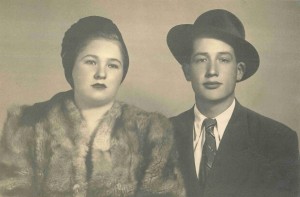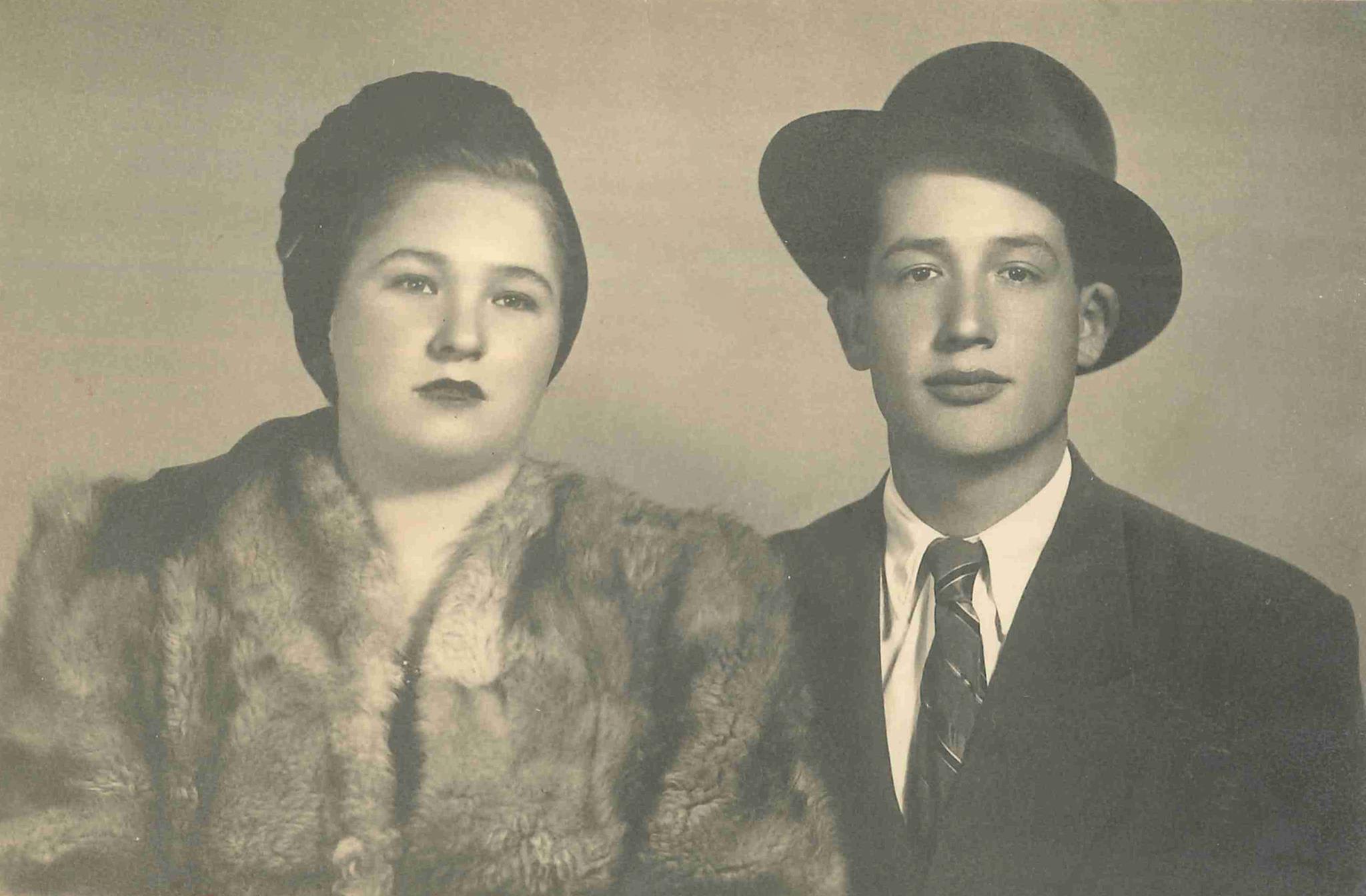
After the 1991 Gulf War – during which I gathered real-time information about Saddam’s Scud assaults for Israel Defense Forces Spokesman Nachman Shai – I earned my first military leave. Friends invited me to reef dive Eilat’s crystal clear Red Sea and bodysurf Caesarea’s Roman aqueduct-framed beach. To everyone’s surprise, including my grandfather’s, I opted to spend the week at his Talmud tome-filled apartment in the ultra-Orthodox enclave of Bnei Brak.
“Wouldn’t you rather ‘hang out’ with your friends?” Ozer Grundman, a Hasidic Holocaust survivor, asked his secular grandson.
“I rather hang out here,” I said, “and interview you about your life.”
“You’ll be wasting your time,” he said, walking away.
My grandpa had separated his past from the present much as he kept milk and meat apart in his glatt-kosher kitchen. My grandma, Rivka Grundman, a Czechoslovakian Jew who died of diabetic complications 13 years earlier, had been similarly silent and so we never learned about what she went through at Auschwitz.
As a journalist and the eldest grandchild, I felt determined to document my grandpa’s story, whether he liked it or not. So I showed up at sunrise on my first day off from the IDF, a reporter’s notebook at hand, a pen clicked at the ready.
Initially, my grandpa stuck to his guns. But I stuck around and on the second night, he started talking – a harrowing memory here, a gut-wrenching snippet there. Soon, it all came pouring out. Over the next four days, until the get-ready-for-the-Sabbath alert sounded across Bnei Brak, he told me about his childhood in Poland as the firstborn son of German-Jewish immigrants, his days at a Warsaw yeshiva, his short-lived escapes from Nazi Stormtroopers, his years of terror and hunger in Nazi concentration camps and his liberation from Theresienstadt in Czechoslovakia.
After the war, he met my grandma at the Theresienstadt DP (displaced person) camp. They married a few weeks later. In 1946, she gave birth to my mother and her twin brother. In 1947, when the United Nations ended the British Mandate of Palestine and split the land between the Jews and the Arabs, my grandpa planned to move to Israel.
My grandma fought him, fearing the British- and French-backed Arab armies would slaughter Palestine’s ill-supplied 600,000 Jews. Indeed, an international arms embargo enforced by the United States and nearly every nation appeared to doom Israel. But it failed to deter my grandpa, who tricked his wife into relocating to the besieged newborn state by claiming they were boarding a New York-bound ship.
Although she felt bitterly disappointed to disembark in Haifa instead of Ellis Island, my grandma quickly composed herself to see her husband off to war.
Tasked with warding off the Egyptians in the Negev Desert, my grandpa’s battalion possessed no machine guns, no artillery and just one rifle and a handful of bullets for every four soldiers.
One day, weapons arrived like manna from heaven. When his sergeant handed him a rifle, IDF Private Grundman gripped it with reverence. Holding it against the desert sun, he noticed … no, it couldn’t be. He did a double take. It was still there. He pressed his nose against the metal to eyeball an engraved German eagle.
“Was this the epitome of irony?” I asked.
“Irony, coincidences – those notions exist only in the minds of nonbelievers,” my grandpa said.
“Did seeing the German insignia upset you?”
“Nah,” he said, “I was just happy to finally be able to protect myself and my people.”
We sat quietly for a few moments. Then my grandpa asked me a non-rhetorical question that altered the trajectory of my journalistic journey: “Do you know how Israel secured those rifles?”
I had no idea. It all sounded crazy to me. So I told him I’d find out. Over the following two decades, I interviewed the men who brought those rifles to Israel for newspaper articles and my upcoming documentary, “A Wing and a Prayer.”
The German rifles and other Nazi-surplus weapons, including ammunition and fighter planes, came from German WWII factories in Czechoslovakia. Everything had to be transported to Israel by planes from this landlocked country – even the Messerschmitt ME-109s, which had a flying range of 400-500 miles (Czechoslovakia and Israel are 1,600 miles apart).
To airlift the weapons, a group of WWII-veteran aviators – Jews and Christians from around the world, particularly the US, Canada and South Africa – carried out a mission so secret it remains virtually unknown to this day. Led by Al Schwimmer, who went on to create and run Israel Aircraft (now Aerospace) Industries, they bought, repaired and manned decommissioned US transport planes (mainly Curtiss C-46 Commandos). Outfoxing the US State Department, FBI, CIA and MI5, which aimed to ground them, they launched a bogus Panamanian airline and smuggled in the Nazi-surplus weapons from behind the Iron Curtain.
They also flew the Messerschmitts, drove away the Egyptian Spitfires and bombers that wreaked havoc on Tel Aviv, and gained crucial aerial control over the Jewish state. Thus, besides putting rifles in the hands of Israeli soldiers, this group of daredevil aviators created the Israeli Air Force, which celebrates its 65th anniversary May 29.
By the time I figured out the answer to my grandpa’s question, I was living in Florida. I thought about calling him but decided to wait to tell him in person.
In 2003, my uncle called to say my grandpa had been diagnosed with late-stage pancreatic cancer. I flew to Tel Aviv the next day. During one of our afternoons at a Bnei Brak park, I told Private Grundman how that German gun ended up in his hands.
My grandpa sat quietly for a while. Then he smiled and said, “We wouldn’t be here today without that rifle.”
The words of this author reflect his/her own opinions and do not necessarily represent the official position of the Orthodox Union.
